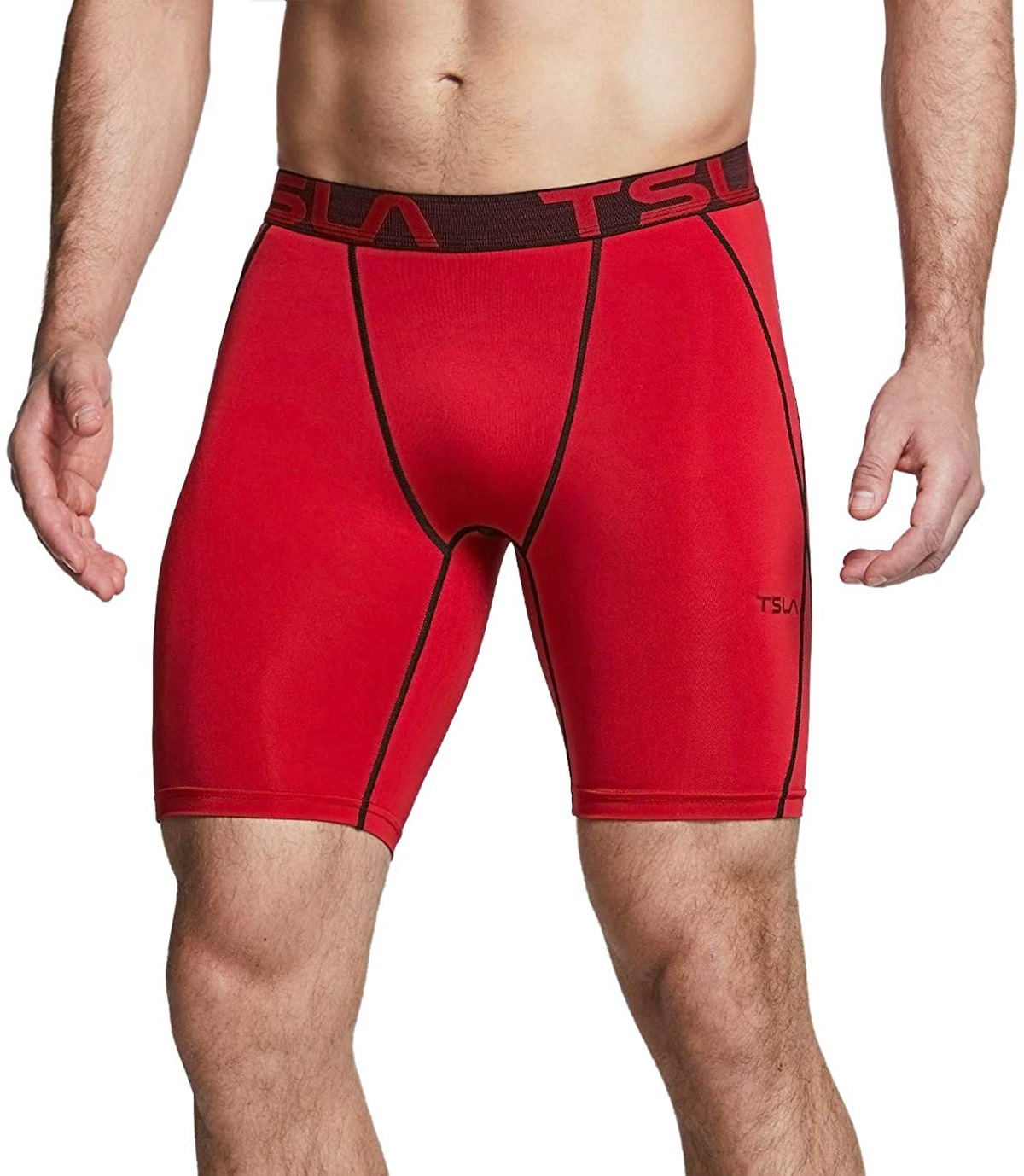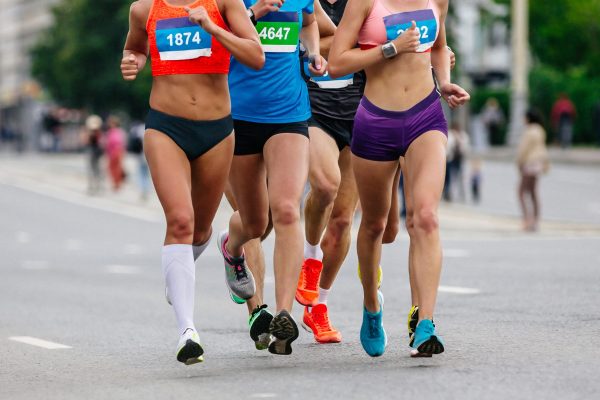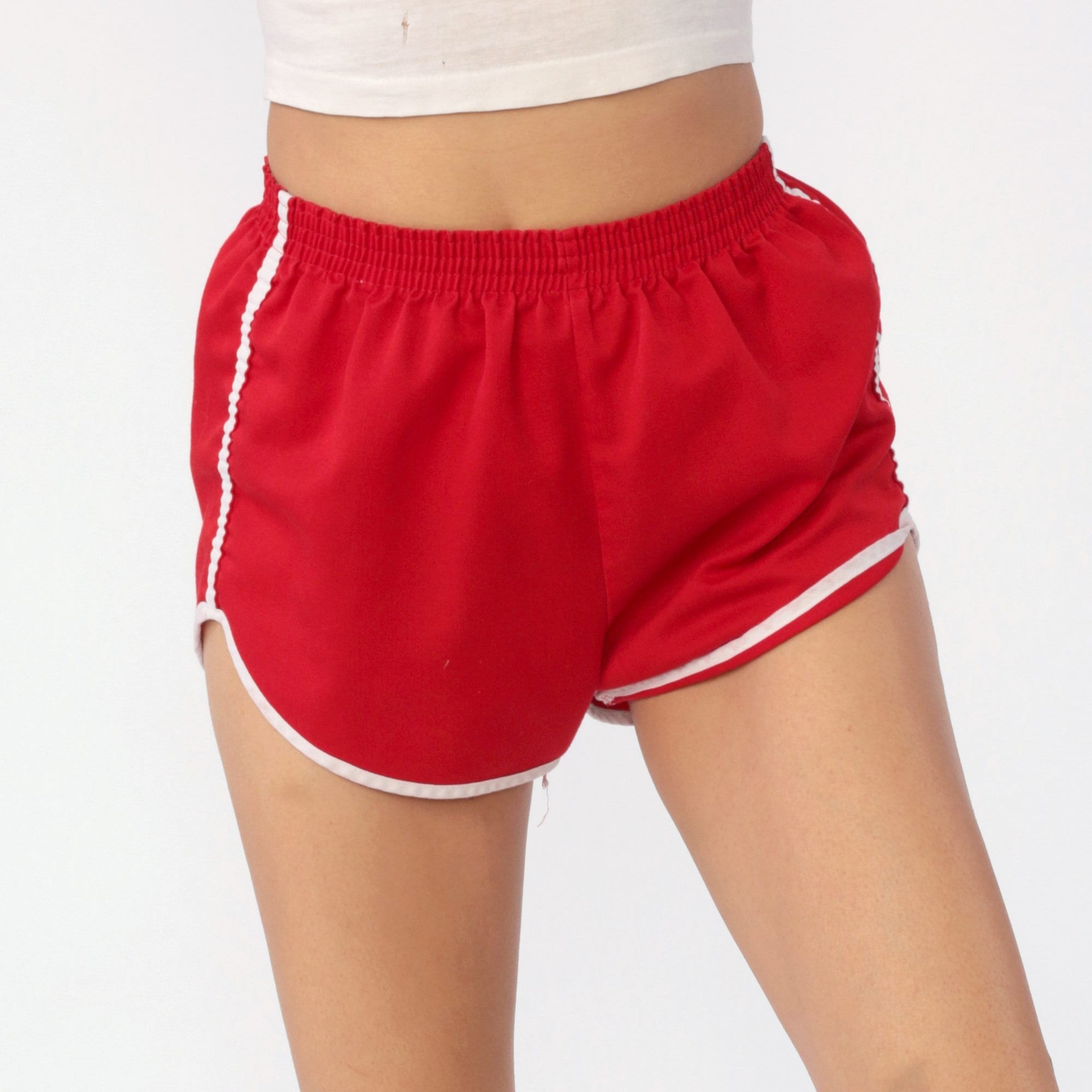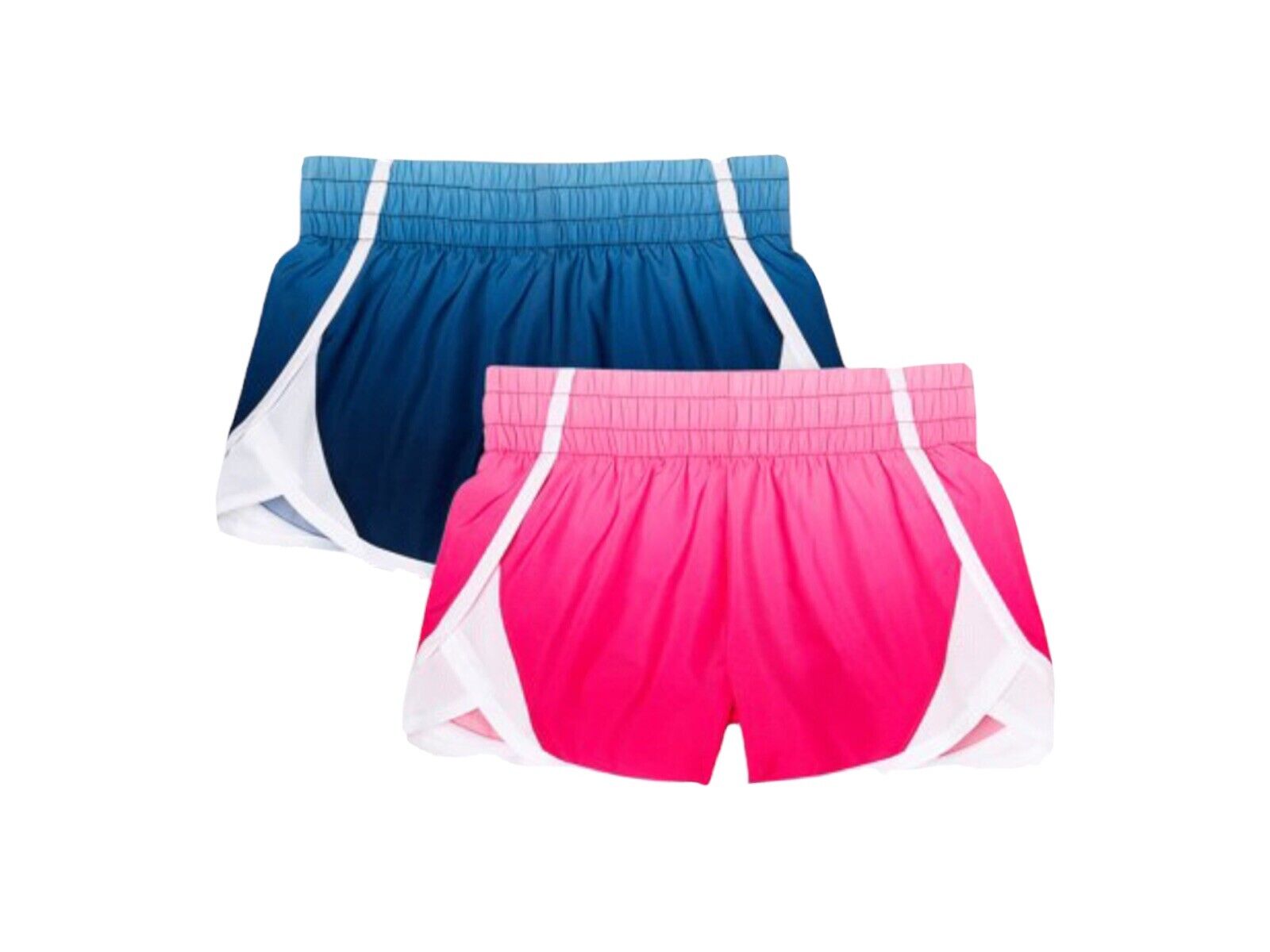

Featured
Why Does My Face Get Red When I Workout
Published: August 12, 2023
Discover why your face turns red when you workout. Featured article packed with insights and tips to understand this common phenomenon.
Introduction
Have you ever noticed that your face turns red when you work out? You may have wondered why this happens and if it’s a cause for concern. Well, fret not, because facial redness during exercise is actually quite common and usually harmless. In fact, it’s a normal physiological response that occurs due to a variety of factors.
When you engage in physical activity, your body undergoes numerous changes to meet the increased demands. One of these changes is an increase in blood flow, which helps deliver more oxygen and nutrients to your muscles. This increased blood flow can also affect the skin, causing it to appear flushed or red.
But why does this happen specifically in the face? Well, the face is rich in blood vessels, particularly small capillaries that lie close to the skin’s surface. These capillaries can dilate or expand when your body is under stress or exertion, leading to increased blood flow and the characteristic redness.
In addition to increased blood flow, body temperature also plays a role in facial redness during exercise. As your muscles generate heat, your body tries to regulate its temperature by dilating blood vessels near the skin’s surface. This allows excess heat to dissipate through the skin, helping to cool you down. The dilation of these blood vessels contributes to the redness in your face.
The sympathetic nervous system, which is responsible for the fight-or-flight response, also plays a role in facial redness during exercise. When you engage in physical activity, your body activates the sympathetic nervous system to increase heart rate, blood pressure, and blood flow. This activation causes the blood vessels in your face to dilate further, intensifying the redness.
It’s important to note that the severity of facial redness during exercise can vary from person to person. Some individuals may experience a slight pinkish hue, while others may have a deep crimson flush. Several factors can influence the degree of redness, including skin sensitivity, underlying medical conditions, and even the intensity of your workout.
In the following sections, we’ll delve deeper into the physiology of facial redness during exercise, the effects of physical activity on the skin, and some tips for managing facial redness. So, let’s uncover the mystery behind your red face and embrace the wonderful world of exercise-induced flush!
The Physiology of Facial Redness During Exercise
Facial redness during exercise is a fascinating physiological phenomenon that results from a combination of factors. Understanding the underlying mechanisms can help shed light on why our faces turn red and reassure us that it’s a natural response.
One of the primary reasons for facial redness during exercise is the increased blood flow to the skin. When you engage in physical activity, your muscles require more oxygen and nutrients to meet the demands of the exercise. As a result, your heart pumps more blood to supply these vital resources, and this increased blood flow affects not only your muscles but also your skin.
Another factor at play is capillary dilatation. Capillaries are tiny blood vessels that connect the arteries and veins. The capillaries in our face are particularly close to the surface of the skin, making them more visible. When your body is under stress or exertion, these capillaries can dilate or expand, allowing more blood to flow through them. This dilation of the capillaries, combined with increased blood flow, contributes to the redness in your face.
Body temperature also plays a role in facial redness during exercise. As your muscles generate heat during physical activity, your body needs to regulate its temperature to prevent overheating. To cool down, your body initiates a process called vasodilation, which involves the dilation or widening of blood vessels near the skin’s surface. By expanding the blood vessels, excess heat can be released through the skin, helping to cool you down. The increased blood flow resulting from vasodilation causes your face to appear flushed or red.
The sympathetic nervous system response also contributes to facial redness during exercise. The sympathetic nervous system is responsible for the body’s fight-or-flight response. When you engage in physical exertion, the sympathetic nervous system is activated to increase heart rate, blood pressure, and blood flow. This activation triggers the further dilation of blood vessels in your face, intensifying the redness.
It’s important to note that the degree of facial redness experienced during exercise can vary from person to person. Factors such as skin sensitivity, underlying medical conditions, and the intensity of the workout can all influence the extent of redness. Some individuals may experience a mild pinkish hue, while others may have a deeper and more pronounced flush.
In the next section, we’ll delve into the effects of physical activity on facial redness and explore some factors that can impact the intensity of the redness. So, let’s continue our journey into understanding the fascinating world of exercise-induced facial redness!
Increased Blood Flow to the Skin
One of the main factors contributing to facial redness during exercise is the increased blood flow to the skin. When you engage in physical activity, your heart pumps blood at a faster rate to deliver oxygen and nutrients to your muscles. This increased blood flow not only benefits your muscles but also affects the tiny blood vessels in your skin.
The blood vessels in our face, known as capillaries, are particularly close to the surface of the skin, making them more visible. When your body is under stress or exertion, these capillaries can dilate or expand. This dilation allows more blood to flow through them, leading to increased blood flow to the skin and, consequently, facial redness.
The increased blood flow to the skin during exercise serves a vital purpose. It helps regulate your body’s temperature and plays a role in cooling you down. As your muscles generate heat during physical activity, your body needs to release that excess heat to maintain an optimal temperature.
Through a process called vasodilation, the blood vessels near the skin’s surface expand or widen. This expansion allows more blood to flow through these vessels, bringing the excess heat from the muscles to the skin’s surface. As the blood vessels dilate and more blood fills them, the skin appears flushed or red.
This increased blood flow to the skin during exercise not only helps cool the body but also carries away waste products produced during intense physical activity. It facilitates the removal of metabolites and the delivery of fresh oxygen and nutrients to the skin cells.
It’s worth noting that the amount of blood flow to the skin during exercise can vary depending on factors such as the intensity and duration of the workout, individual fitness levels, and environmental conditions. Higher-intensity activities or exercising in hot weather can lead to more pronounced facial redness due to the increased blood flow needed to cool the body down.
While increased blood flow to the skin during exercise may result in facial redness, it’s an essential and normal physiological response. Embrace the warmth in your cheeks as a sign that your body is working hard to keep you healthy and meet the demands of your workout!
Capillary Dilatation
Capillary dilatation is a key factor contributing to facial redness during exercise. Capillaries are the smallest and most numerous blood vessels in our body, responsible for delivering oxygen and nutrients to tissues and removing waste products. In the context of facial redness, the dilation or expansion of capillaries near the skin’s surface plays a significant role.
During physical activity, capillaries in the face can dilate, allowing for increased blood flow to the skin. This dilation occurs due to the body’s response to stress or exertion, signaling a need for extra blood supply. When these capillaries expand, more blood can flow through them, resulting in the characteristic redness of the face.
There are several reasons why capillaries dilate during exercise. One factor is the increased demand for oxygen and nutrients by the muscles. As you engage in physical activity, your muscles require more fuel to produce energy. To meet this demand, blood flow must increase to deliver an ample supply of oxygen and nutrients. Capillary dilatation ensures that enough blood reaches the muscles to support their work.
Another reason for capillary dilatation during exercise is the removal of waste products. As your muscles work, they produce metabolic waste such as carbon dioxide and lactic acid. These waste products need to be efficiently eliminated from the muscles to prevent fatigue and discomfort.
Capillary dilatation plays a role in facilitating the removal of these waste products. By widening the capillaries near the skin’s surface, more blood can circulate through them and carry away the waste products generated during exercise. This helps maintain a healthy environment within the muscles and enhances performance.
Furthermore, capillary dilatation helps regulate body temperature during exercise. As physical activity generates heat, the body needs a mechanism to dissipate that heat and prevent overheating. Expanding the capillaries near the skin’s surface increases blood flow to the skin, allowing heat to be effectively released from the body through the process of vasodilation.
The dilated capillaries in the face contribute to facial redness and a warm sensation. The intensity of the redness can vary from person to person and depends on individual factors such as fitness levels, genetic predisposition, and environmental conditions.
Embrace the phenomenon of capillary dilatation during exercise as a testament to your body’s remarkable ability to adapt and respond to the demands of physical activity. It’s a natural and necessary response that helps optimize performance and maintain a healthy body.
The Role of Body Temperature
When it comes to facial redness during exercise, body temperature plays a significant role in causing the characteristic flush in our faces. As you engage in physical activity, your muscles generate heat as a byproduct of their metabolic processes. In order to maintain a stable body temperature, several processes are initiated to cool the body down, including the dilation of blood vessels near the skin’s surface.
The dilation or widening of blood vessels near the skin’s surface is known as vasodilation. During exercise, vasodilation occurs to facilitate heat dissipation from the body. This process allows an increased amount of blood to flow through the blood vessels in the skin, bringing heat from the muscles to the skin’s surface.
By dilating these blood vessels, more blood is directed to the skin’s surface, enhancing heat transfer and aiding in the release of excess heat generated during physical activity. This helps regulate your body’s temperature and prevent overheating.
As blood vessels in the skin dilate during exercise, the increased blood flow brings more warm blood to the surface, resulting in the visible redness of the face. The greater the intensity and duration of the exercise, the more pronounced the facial redness may become due to the longer exposure of the blood vessels to the heat generated by the muscles.
It’s important to note that the body’s thermoregulatory response during exercise is a complex and dynamic process. The degree of vasodilation and resulting facial redness can vary depending on factors such as individual fitness levels, hydration status, environmental conditions, and the intensity of the exercise.
Furthermore, individual differences in skin temperature regulation may also contribute to variations in facial redness during exercise. Some individuals may naturally have a more exaggerated vasodilation response, leading to more profound facial redness, while others may have a milder response.
It’s worth mentioning that although facial redness during exercise is commonly experienced, it’s essential to pay attention to your body’s signals. If you feel excessively hot, dizzy, or experience any other discomfort beyond the usual flushed face, it’s important to listen to your body and modify your exercise intensity or seek medical advice if needed.
Facial redness due to vasodilation and body temperature regulation during exercise is a normal and healthy response. Embrace it as a sign of your body working hard to keep you cool and comfortable during your workout!
The Sympathetic Nervous System Response
Another key player in the phenomenon of facial redness during exercise is the sympathetic nervous system. The sympathetic nervous system is a branch of the autonomic nervous system that controls our fight-or-flight response and helps our body adapt to stress and physical exertion.
During exercise, the sympathetic nervous system is activated to prepare the body for the demands of physical activity. This activation leads to several physiological responses, including an increase in heart rate, blood pressure, and blood flow. These responses help supply oxygen and nutrients to the muscles while enhancing performance.
Part of the sympathetic nervous system response involves the dilation or widening of blood vessels, including those in the face. The dilation of these blood vessels causes increased blood flow to the skin, resulting in the visible redness and warmth experienced during exercise.
When the sympathetic nervous system is activated, it releases neurotransmitters such as norepinephrine, which acts on the smooth muscles surrounding the blood vessels. This causes the blood vessels to relax and widen, a process known as vasodilation.
As the blood vessels in the face dilate, more warm blood is directed to the skin’s surface, contributing to the flushed appearance. This process is further intensified when combined with the increased blood flow resulting from the increased heart rate and overall sympathetic nervous system response to exercise.
The sympathetic nervous system response is essential for supporting physical activity by redirecting blood flow to the muscles and aiding in the delivery of oxygen and nutrients. The expansion of blood vessels in the face is just one aspect of this broader physiological response.
It’s important to note that the degree of sympathetic nervous system activation and resulting facial redness during exercise can vary depending on factors such as the intensity and duration of the exercise, individual fitness levels, and even emotional state. Higher-intensity activities or engaging in activities that evoke a strong emotional response can lead to a more pronounced sympathetic nervous system response and greater facial redness.
Embrace the sympathetic nervous system response during exercise as a natural and necessary part of your body’s ability to adapt and perform. Recognize facial redness as a visual representation of your body’s physiological processes working together to support your active lifestyle.
Vasodilation and Vasoconstriction
Vasodilation and vasoconstriction are two opposing processes that play a crucial role in regulating blood flow and temperature in our bodies, including during exercise. Understanding these processes can help explain the changes in facial redness that occur during physical activity.
Vasodilation refers to the widening or dilation of blood vessels, while vasoconstriction refers to the narrowing or constriction of blood vessels. These processes are controlled by the smooth muscles surrounding the blood vessels, which can relax or contract in response to various stimuli.
During exercise, our body undergoes complex changes, and one of these changes involves vasodilation. Vasodilation occurs in response to the increased demands of physical activity and allows for an increased flow of blood to the muscles and skin.
In relation to facial redness, vasodilation of blood vessels near the skin’s surface leads to increased blood flow in the face. This increased blood flow brings more warm blood to the surface, contributing to the visible redness and warmth that is commonly experienced during exercise.
Vasoconstriction, on the other hand, is the narrowing of blood vessels. This process can occur to redirect blood flow to other areas of the body as needed. During exercise, vasoconstriction may occur in certain areas, such as the internal organs, to prioritize blood flow towards the working muscles.
Vasoconstriction can also play a role in regulating body temperature during exercise. When the body needs to dissipate excess heat, vasodilation occurs in the skin to release heat through the increased blood flow. On the contrary, during periods of rest or in cold environments, vasoconstriction helps to conserve heat by decreasing blood flow to the skin and reducing heat loss.
The balance between vasodilation and vasoconstriction is crucial in maintaining optimal blood flow and temperature regulation in our bodies during exercise. Factors such as the intensity and duration of the physical activity, environmental conditions, and individual fitness levels can influence the extent to which these processes occur.
It’s important to note that the interplay between vasodilation and vasoconstriction is a carefully orchestrated mechanism that helps support our overall health and performance during exercise. Understanding and appreciating these processes can help us better understand the changes that occur in our bodies and the experience of facial redness during physical activity.
The Effects of Physical Activity on Facial Redness
Physical activity has various effects on our bodies, and facial redness is one of the noticeable changes that can occur during exercise. Understanding the effects of physical activity on facial redness can help us better appreciate the dynamic processes happening within our bodies.
One of the primary effects of physical activity on facial redness is the increase in blood flow to the skin. When we engage in exercise, our muscles require more oxygen and nutrients to perform optimally. This increased demand for blood supply leads to the dilation of blood vessels, including those in the face, resulting in the visible redness.
This increased blood flow not only delivers essential nutrients to the muscles but also enhances the removal of waste products. By increasing blood flow to the skin, physical activity aids in the removal of metabolic byproducts like carbon dioxide and lactic acid, helping to maintain muscle function and reduce fatigue.
Another effect of physical activity on facial redness is the activation of the sympathetic nervous system. When we exercise, our body’s fight-or-flight response is triggered, and the sympathetic nervous system is activated. This response includes the dilation of blood vessels in the face, contributing to facial redness.
Additionally, physical activity raises body temperature due to increased energy expenditure and heat generation by the muscles. In response to the rise in body temperature, blood vessels near the skin’s surface dilate to dissipate heat and regulate temperature. This dilation leads to increased blood flow in the skin, resulting in facial redness.
The effects of physical activity on facial redness can vary from person to person and are influenced by individual factors such as fitness levels, genetic predisposition, and environmental conditions. Some individuals may experience a mild pinkish hue, while others may have a more intense and pronounced facial redness during exercise.
It’s important to note that facial redness during exercise is a natural physiological response and usually not a cause for concern. However, if the facial redness is accompanied by other symptoms like dizziness, difficulty breathing, or pain, it’s advisable to consult a healthcare professional to rule out any underlying medical conditions.
Embrace the effects of physical activity on facial redness as a testament to your body’s ability to adapt and respond to the demands of exercise. Facial redness serves as a visible reminder of the incredible changes happening within as you engage in physical activity to improve your health and well-being.
Factors Affecting Facial Redness During Exercise
Facial redness during exercise can vary in intensity and duration from person to person. Several factors can influence the degree of facial redness experienced during physical activity. Understanding these factors can help us better understand the individual variations in facial redness and its underlying causes.
One factor that can affect facial redness during exercise is skin sensitivity. Some individuals have naturally more sensitive or reactive skin, which may make them more prone to experiencing pronounced facial redness. Skin sensitivity can be influenced by genetic factors, hormonal changes, or even certain skin conditions.
Medical conditions can also impact facial redness during exercise. Some individuals with conditions such as rosacea or erythema may experience more significant and persistent facial redness during physical activity. These conditions involve the excessive dilation of blood vessels in the face, leading to chronic redness that can be aggravated by exercise.
Additionally, the intensity and duration of the exercise can influence the degree of facial redness. Higher-intensity activities that require more cardiovascular effort and generate more heat in the body can lead to more pronounced facial redness. Prolonged periods of exercise can also result in sustained redness as the body continues to supply oxygen and nutrients to the working muscles.
Environmental factors, particularly temperature and humidity, can affect facial redness during exercise. Exercising in hot and humid conditions can lead to increased blood flow and greater facial redness as the body works to dissipate heat. On the other hand, engaging in physical activity in cold environments can cause vasoconstriction, reducing blood flow to the skin and resulting in reduced facial redness.
Other individual factors, such as fitness levels and overall cardiovascular health, can also impact facial redness during exercise. Individuals who are more physically fit may have a more efficient cardiovascular system, leading to better regulation of blood flow during exercise and potentially less pronounced facial redness. Conversely, those with certain cardiovascular conditions or poor overall circulation may experience more noticeable redness in the face.
It’s important to note that while various factors can influence facial redness, the presence of redness itself does not necessarily indicate a problem. Facial redness during exercise is typically a normal physiological response, and unless accompanied by other concerning symptoms, it does not usually require medical intervention.
Understanding the factors contributing to facial redness during exercise can help us appreciate the unique variations seen in individuals. Embrace the individuality of your facial redness and focus on the numerous benefits that physical activity brings to your overall health and well-being.
Skin Sensitivity and Reactions
Skin sensitivity and reactions play a significant role in the varying degrees of facial redness experienced during exercise. Our skin’s individual characteristics and reactions can influence how it responds to physical activity and contribute to the intensity of facial redness.
Some individuals have naturally more sensitive or reactive skin, which can make them more prone to noticeable facial redness during exercise. Skin sensitivity can be influenced by various factors such as genetics, hormonal changes, and even underlying skin conditions.
One skin condition that can impact facial redness during exercise is rosacea. Rosacea is a chronic inflammatory skin condition characterized by facial redness, flushing, and the presence of small blood vessels visible on the skin. When individuals with rosacea engage in physical activity, the blood vessels in their skin may dilate more easily, leading to increased redness and flushing.
In addition to rosacea, other skin conditions such as eczema or dermatitis can also contribute to heightened facial redness during exercise. These conditions can make the skin more sensitive and reactive, resulting in more pronounced redness when exposed to physical activity or exertion.
Not only can skin conditions impact facial redness, but certain skincare products or ingredients may also contribute to heightened sensitivity or reactions. Some individuals may experience increased facial redness during exercise if they have used products that contain harsh ingredients, fragrances, or irritants that can exacerbate skin sensitivity.
Environmental factors can also influence skin sensitivity and reactions during exercise. Exercising in extreme weather conditions, such as heat and high humidity, can lead to increased skin sensitivity and a higher likelihood of facial redness. The combination of physical activity and environmental factors can cause vasodilation and increased blood flow to the skin, resulting in visible redness.
It’s essential to listen to your skin and pay attention to any reactions or discomfort during exercise. If you experience excessive facial redness accompanied by burning, stinging, itching, or pain, it’s advisable to consult a dermatologist or healthcare professional. They can assess your skin’s condition and provide appropriate guidance and recommendations.
When it comes to skin sensitivity and reactions, it’s crucial to take proper care of your skin both during and after exercise. Choosing gentle skincare products, wearing appropriate protective clothing and sunscreen, and maintaining proper hydration can help minimize skin sensitivity and reduce the risk of excessive facial redness.
Embrace your unique skin and its sensitivities, and make informed choices to support its health. Remember, facial redness during exercise is a natural response, but understanding and caring for your skin can help you maintain its overall well-being.
Certain Medical Conditions
While facial redness during exercise is usually a normal physiological response, there are certain medical conditions that can contribute to increased or more pronounced redness in the face. These conditions can affect blood vessels, skin sensitivity, or the body’s overall response to physical activity.
One such condition is rosacea, a chronic inflammatory skin condition that affects the face. Rosacea is characterized by persistent facial redness, flushing episodes, and the presence of visible blood vessels. When individuals with rosacea engage in exercise, the dilation of blood vessels in the face can become more prominent, leading to heightened redness and flushing.
Similarly, individuals with other vascular disorders such as telangiectasia or spider veins may experience increased facial redness during exercise. These conditions involve the enlargement of blood vessels near the skin’s surface, resulting in visible red or purple lines. Physical activity can further stimulate blood flow to these blood vessels, exacerbating the redness.
Skin conditions such as eczema or dermatitis can also contribute to heightened facial redness during exercise. These conditions involve inflammation of the skin and can make the skin more sensitive and reactive. The combination of physical activity and increased blood flow can lead to more noticeable redness and irritation.
Some individuals may have underlying medical conditions that impact overall blood circulation or cardiovascular health. Conditions such as high blood pressure or poor blood vessel functioning can influence facial redness during exercise. Blood pressure medications or other treatments may also affect the body’s response to physical activity, potentially altering the intensity of facial redness.
It’s important for individuals with these medical conditions to consult with healthcare professionals to understand how physical activity may affect their specific circumstances. They can provide guidance on exercise recommendations, taking into consideration any precautions or modifications necessary to minimize risks or discomfort.
It’s worth mentioning that facial redness associated with certain medical conditions may be more persistent and not solely related to exercise. If you experience consistent or worsening facial redness without apparent triggers or if it is accompanied by other concerning symptoms, it’s advisable to seek medical advice for proper diagnosis and management.
Remember, everyone’s body and health conditions are unique. By understanding and being aware of certain medical conditions and their impact on facial redness, we can approach exercise with knowledge and adapt it to our individual circumstances.
Tips for Managing Facial Redness During Exercise
If facial redness during exercise is a concern for you, there are several tips and strategies that can help manage and minimize its intensity. While facial redness is a normal physiological response, these suggestions can help make your workout more comfortable and lessen the visible redness.
1. Stay Hydrated: Proper hydration is essential during exercise as it aids in maintaining an optimal body temperature. By staying hydrated, you can help regulate your body’s response to heat and potentially reduce facial redness.
2. Choose Cool Environments: Exercising in cooler environments or opting for early morning or evening workouts when temperatures are milder can help reduce excessive facial redness. Cooler temperatures can assist in minimizing vasodilation and the associated redness.
3. Wear Breathable Fabrics: Opt for breathable and moisture-wicking fabrics when choosing your workout attire. These materials help draw sweat away from the skin and allow for better heat regulation, reducing the likelihood of intense redness.
4. Use Sunscreen: Applying sunscreen with a high SPF to your face before exercising outdoors can help protect your skin from harmful UV rays. Sun exposure can exacerbate facial redness and contribute to skin sensitivity.
5. Avoid Hot and Spicy Food: Consuming hot or spicy foods before a workout can increase the likelihood of facial redness during exercise. Spicy foods can dilate blood vessels and elevate body temperature, which can intensify redness.
6. Manage Stress Levels: Stress can trigger facial redness, so incorporating stress management techniques into your routine, such as meditation or deep breathing exercises, can help reduce the physiological response and prevent excessive redness.
7. Choose Lower-Intensity Exercises: If facial redness is a consistent concern, opting for lower-intensity exercises or incorporating intervals of lower intensity can help manage redness by minimizing the demand for increased blood flow to the skin.
8. Skincare Routine: Establishing a gentle skincare routine can help soothe and nourish sensitive skin. Use mild cleansers, moisturizers, and products specifically formulated for sensitive skin to minimize irritation and potential redness during and after exercise.
9. Take Breaks: If you notice a significant increase in facial redness during exercise, taking short breaks or slowing down your pace can help regulate your body’s response. Allow your body time to cool down before resuming your workout.
10. Consult a Healthcare Professional: If facial redness becomes persistent, uncomfortable, or is accompanied by other concerning symptoms, it’s advisable to consult a healthcare professional. They can assess your specific circumstances and provide tailored advice.
Remember, facial redness during exercise is generally harmless and due to the body’s natural response to physical exertion. However, by implementing these tips, you can help manage and reduce the intensity of facial redness, making your workout more enjoyable and comfortable.
Conclusion
Facial redness during exercise is a common and natural occurrence resulting from various physiological processes within our bodies. Understanding the underlying mechanisms can help us appreciate this phenomenon and address any concerns associated with it.
Increased blood flow to the skin, capillary dilatation, body temperature regulation, and the sympathetic nervous system response all contribute to facial redness during exercise. These processes work together to deliver oxygen and nutrients to our muscles, dissipate excess heat, and help our bodies adapt to the demands of physical activity.
Various factors can influence the degree of facial redness experienced during exercise, including skin sensitivity, underlying medical conditions, exercise intensity, and environmental factors. It’s essential to recognize that facial redness is an individualized response and can vary from person to person.
While facial redness during exercise is generally harmless, there are tips and strategies that can help manage its intensity. Staying hydrated, choosing cool environments, wearing breathable fabrics, and implementing a gentle skincare routine are among the approaches that can minimize redness and make your workout more comfortable.
It’s important to listen to your body, pay attention to any signs of discomfort, and consult a healthcare professional if facial redness is persistent, accompanied by concerning symptoms, or causing significant distress.
Embrace the beauty of your body’s responses during exercise, including the visible redness in your face. It’s a reminder of the incredible processes happening within as you engage in physical activity to enhance your health and well-being.
So, the next time your face turns red during a workout, embrace it as a sign of your body’s extraordinary capabilities and enjoy the benefits of staying active and healthy.







